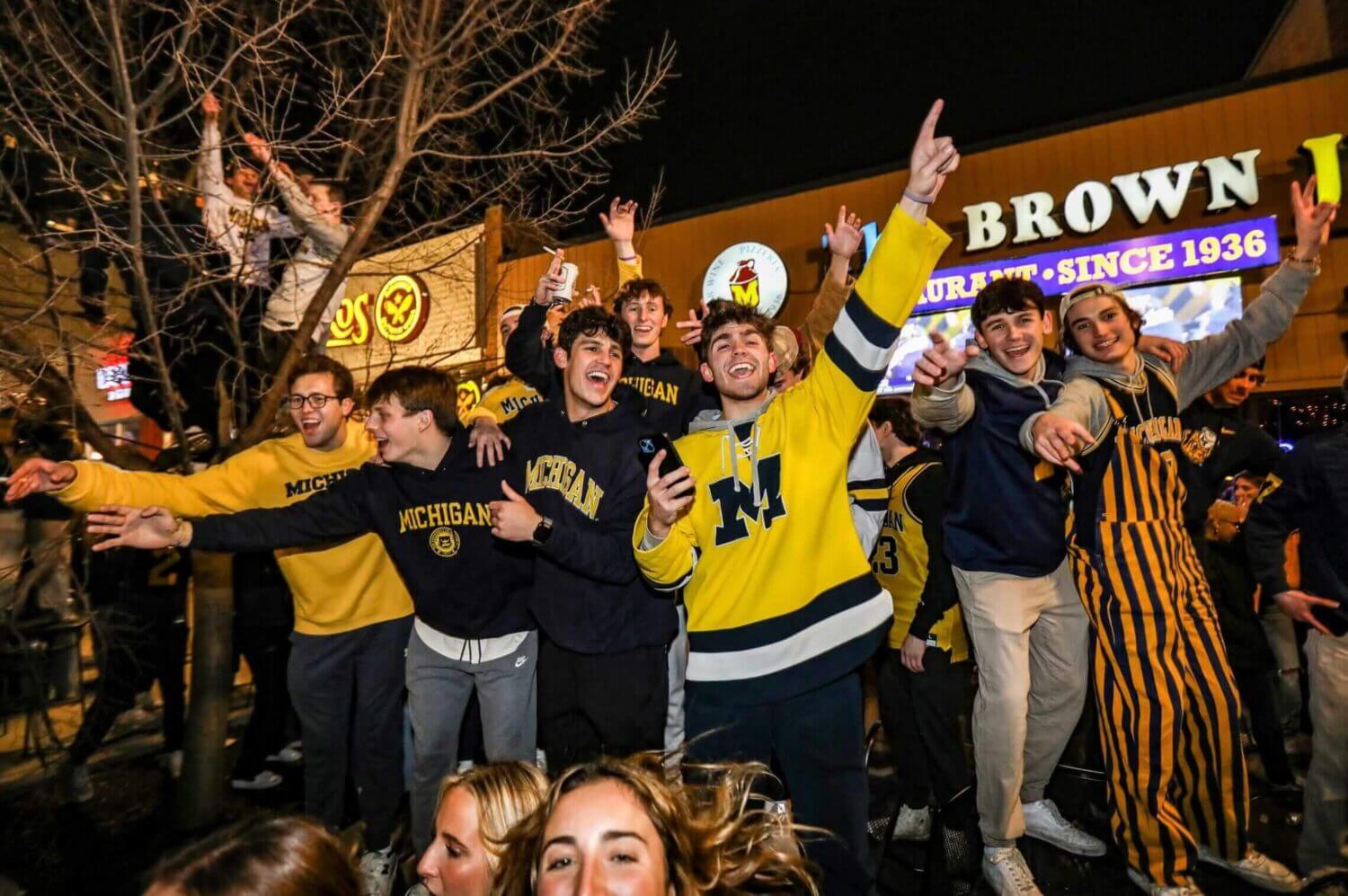Countless stadiums, arenas, golf tournaments and bowl games have sponsors in their titles. The world’s most prestigious soccer league was called the Barclays Premier League until 2016. According to Pitchbook, private equity firms currently hold stakes in more than 60 North American sports franchises, as well as several top clubs of European football.
But when news broke Thursday that the Big 12 was considering both a possible title sponsorship deal with insurance giant Allstate and a billion-dollar private equity partnership, you could almost hear the reaction collective: “How dare they?!” »

GO FURTHER
Big 12 discusses PE investment, sale of naming rights to Allstate
Kirk Wakefield, a marketing professor at Baylor University, had a very different reaction to the possible title sponsorship.
“You wonder why people haven’t done this already,” said Wakefield, who runs a research firm that studies the impact of sponsorship on sports leagues and brands. “It’s such an obvious opportunity.”
USC sports business professor David Carter examines the plight of the Big 12, which lags hundreds of millions of dollars a year in revenue compared to the Big Ten and SEC, and considers capital -investment as a question of Darwinian survival. To win national championships, Big 12 schools must be able to spend like their competitors on coaching salaries, recruiting, facilities and, perhaps soon, athlete salaries. This could involve changing funding sources and the relationships between universities and their investors.
“Either you fundraise in some way or you run the real risk of losing relevance,” Carter said. “Some presidents and chancellors may say, ‘That doesn’t look good.’ Well, what is the alternative? If you don’t like it, are you okay with your university or conference being essentially relegated? »
Big 12 commissioner Brett Yormark, hired in 2022 by Roc Nation, has a reputation for taking unorthodox approaches to bolstering his conference’s post-Oklahoma/Texas brand (the schools will play in the SEC this season). Renaming the league “Allstate 12” or selling 20 percent of the conference to a private equity firm in Belgium certainly fits this approach.
Either or both proposals would surely make college sports traditionalists uncomfortable. In fact, at present it is uncertain whether its own presidents will approve either or both initiatives.
But from a purely financial perspective, both scenarios make perfect sense. Simply put, Big 12 athletic departments need to raise more money. Quickly.
The conference’s new deals with ESPN and Fox, which begin in 2025-26, will pay its members an average of $31.7 million per year through 2031. Although this is a coup State for the league considering the loss of Oklahoma and Texas, that’s still far less than what Big Ten schools (around $65 million annual average) and SEC schools (north of $50 million dollars) will gain in the years to come.
Meanwhile, the Big Ten and SEC recently worked their way toward a new College Football Playoff deal in which they will earn nearly twice as much per year ($21 million per school) as the Big 12 ( 12 million dollars).

GO FURTHER
Big 12 reaches new deals with ESPN and Fox: sources
And perhaps most urgently, a pending settlement in the House v. NCAA would allow schools to share about $22 million per year with their athletes. For Ohio State and Texas, this is a rounding error. For the state of Kansas, that represents nearly a quarter of its annual revenue. His university may need to consider subsidizing athletics – either through direct support, tuition, or both – much like new members Cincinnati, UCF and Houston have had to do for years within of the AAC.
“Every institution is looking at private equity,” said one Big 12 athletic director. “You have to at least explore it.”
The sponsorship deal, while tricky, seems less controversial, given that college football teams already play in the Pop-Tarts Bowl and Duke’s Mayo Bowl. Allstate itself is already ubiquitous in sports, from the Allstate Sugar Bowl to the branded nets behind the goal posts.
There’s no doubt that it would be shocking at first if an entire conference turned into a business. But NBA jersey patches were also controversial when they were introduced in 2017. It’s now common to see these Rakuten logos on Golden State Warriors jerseys.
And while the Big Ten and SEC brands date back to 1917 and 1932, respectively, the Big 12 name is still fairly young, having its origins when the Big 8 added four Southwest Conference schools in 1996.
“It’s just against our feelings about tradition that we don’t want it to be the Coca-Cola SEC, or anything,” Wakefield said. “That’s not so true with the Big 12. In the Big 12, you’re less tied to tradition.”
Wakefield estimates that such a deal would be worth a “multiple” of the $15 million to $30 million a year that NFL stadiums receive for naming rights: “The Big 12 is 16 teams, multiple sports all throughout the year. If you were to evaluate that based on the level of exposure, that would be a truly huge number.
The private equity debate is much more complicated.
The Big 12’s potential partner is CVC Capital, a company that has invested billions in Spain’s premier soccer league, LaLiga, France’s Ligue 1, the Women’s Tennis Association and several rugby properties. She previously owned the F1 before selling it in 2016.
European sports leagues embraced private equity long before North American sports organizations, but since 2019, when Major League Baseball first allowed institutional investments, private equity firms have taken stakes in the Cubs Chicago, Houston Astros, San Antonio Spurs, Tampa Bay Lightning and many other franchises. .
It’s no secret. From 2004 to 2022, U.S. professional sports franchises generated significantly higher returns than the S&P 500, according to WealthManagement, which calculated the rise in NBA valuations at 1,079% compared to 317% for the stock index.

A private equity firm reportedly values Michigan football at $1.5 billion. (Photo: Detroit Free Press)
Although college football teams do not hold individual ratings, conference television deals serve as an unofficial proxy. The value of the Big Ten more than doubled between 2017 and 2023. Even the ACC’s much-maligned ESPN deal, valued at $240 million per year, represents a 330% jump from what the league was doing a dozen years ago. Gerry Cardinale, whose company RedBird Capital recently launched a new fund aimed at college sports, told the New York Times in January that the Michigan football team alone would be valued at $1.5 billion.
But unlike professional sports, a profit-driven industry, college athletics has long been treated as a nonprofit extension of major academic institutions, even as rising television revenues have made it a multibillion-dollar industry.
The landscape is evolving with direct revenue sharing with athletes on the horizon, but this is still new territory.
“Athletic departments have always looked for ways to spend every dollar they bring in,” said a Power Conference administrator familiar with the department’s finances. “Not making a profit.”
CVC is betting the Big 12 will at least double its six-year, $2.28 billion contract when it returns in 2031, which, coupled with sponsorships and other conference revenue, could earn the company a return important. But in doing so, the company effectively becomes the 17th member with influence worth $1 billion over the other 16.
“I wonder what the catch will be,” the power conference administrator said. “There is no way these companies would invest hundreds of millions of dollars in a school without expecting some degree of influence in return.”
SEC Commissioner Greg Sankey expressed similar reservations last month. He referred to Red Lobster, which recently declared bankruptcy a decade after being acquired by Golden Gate Capital, as a “cautionary note.” But the Sankey Conference doesn’t face the same financial challenges as the Big 12.
In 2019, former Pac-12 commissioner Larry Scott, whose league was already far behind financially the Big Ten and SEC, presented his board with a similar private equity opportunity. The presidents expressed reservations and refused. Four years later, the conference imploded – with the Big 12 becoming a major school poacher.
A more experienced dealmaker like Yormark, whose previous stops include NASCAR and the Brooklyn Nets, is better equipped to navigate this terrain than presidents and athletic directors. CVC would not take a majority stake in the conference and, according to a person briefed on the discussions, would be barred from participating in any sports decisions.
Asked at the recent Big 12 spring meetings about private equity interest in college sports, Yormark welcomed it.
“In some ways, (the interest in) private equity is a validation of where this industry is going and the growth trajectory,” he said. “So I don’t see that as a bad thing.”
Ultimately, Big 12 presidents will have to recognize an unwelcome but inevitable reality: Their “academic” enterprise is no different than professional sports at this point.
“Before, (college sports) was about return on investment. objective. College sports had this social fabric, what are our graduation rates and all that,” Carter said. “Now it’s the same as professional sports: how do we generate value for sponsors, how do we satisfy our investors? Anything goes to try to generate income.
Yormark has apparently found two potential sources to generate more revenue. His conference may not be able to reject them.
(Photo: Ron Jenkins/Getty Images)